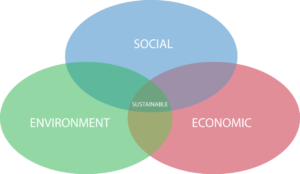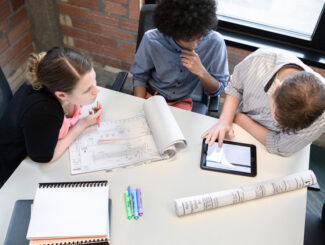By Steven Foss
Feb. 6, 2015
Our environment – natural and built – is a complex network of components, creating unique and dynamic landscapes. Sustainable design focuses on maintaining and improving environments through a collaborative approach, considering how they fit within the greater ecosystem, and employing devices that are environmentally conscious and friendly. Sustainable design strategies typically include reducing carbon footprints; improving energy efficiency; and enhancing or protecting natural habitats while still providing economic, environmental, and social benefits.

Environmental benefits of sustainable design
The major goal of sustainable design is to preserve and improve our environment while reducing our carbon footprint and minimizing the use of natural resources. When sustainable design solutions are incorporated through project development, communities and the environment benefit through one or more of the following scenarios:
- Protecting/conserving the ecosystem
- Improved air and water quality
- Reduced volumes of waste
- Conserving natural resources
Social benefits of sustainable design
Implementation of sustainable design not only provides environmental benefits to our communities, but also improves our quality of life, health, and well-being. Improving the environment and integrating sustainable practices can have the following results on individuals and communities:
- Improved active and passive spaces for social interaction and circulation
- Improved emotional function
- Reduced stress
- Improved work effectiveness
- Stronger sense of belonging and connection to the environment
Economic benefits of sustainable design
Incorporating sustainable design, through integrated design processes and innovative use of sustainable materials and equipment, can also generate economic benefits such as:
- Reduced infrastructure needs
- Lower annual costs for energy, water, and maintenance/repair
- Reduced “heat island” effect
- Improved ability to attract new employees/residents
- Reduced time and cost for project permitting
- Improved use of former sites (such as brownfields)
- Reduced construction costs through reuse of construction materials
- Increased property values
Summary
Sustainable design transforms conventional thinking about our landscape, infrastructure and buildings. It presents significant opportunities to improve our quality of life through environmental, social and economic benefits.
The following is a list of materials and tactics that can be incorporated into sustainable design practices:
- Preserving existing tree cover and biodiversity
- Vegetated swales/rain gardens
- Dry and wet ponds
- Green roofs
- Underground storage and permeable pavement
- Enhanced tree plantings (Silva Cells)
- Infiltration devices
- Alternative energy (wind, solar, biomass, geothermal, hydroelectric)
- Conversion of mowed/maintained turf to low-maintenance native grasses
- Stormwater capture and reuse for irrigation
- Use of recycled construction materials

